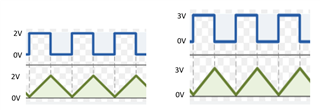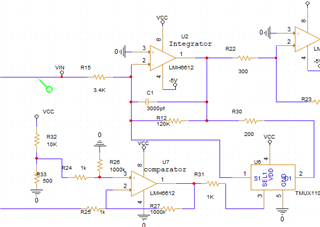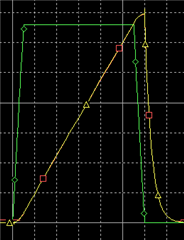- Ask a related questionWhat is a related question?A related question is a question created from another question. When the related question is created, it will be automatically linked to the original question.
This thread has been locked.
If you have a related question, please click the "Ask a related question" button in the top right corner. The newly created question will be automatically linked to this question.
Hi Team,
My I ask a question, is there any simple method to convert a square wave to triangle wave.
The square wave lower voltage is 0V, higher voltage is 2V-4V, frequency 50kHz, periodic 20uS.
For example when input square wave is 0-2V, need output is 0-2V triangle wave. and only rising edge is important.


I tried simulate using op-amp integrator but didn't get the expected result. could you help advice, thanks in advance.
Hi Allen,
you may need to discharge the integrating capacitor by the help of a transistor or analog switch.
Can you show your simulation file?
These threads may interest you:
Kai
Hi Allen,
the low-to-high edge ("attack") is curved and not linear because U2 is no true integrator. You would need to increase R12 to make the feedback loop look more like an ideal capacitance.
The high-to-low edge ("decay") is not sharp and fast because C1 and R30 form a time constant of about 7µs. You need to decrease this time constant.
I would increase R15 by a factor of ten and decrease C1 also by a factor of ten. And I would increase R12 by a factor of at least twenty. To be able to accomplish this you may need to take a different OPAmp in the integrator section which provides lower input bias currents and accepts higher valued feedback resistors.
Kai
Hi Kai,
Thanks a lot for the suggestion, I adjusted C1/R15/R12, low-to-high edge is much more linear.

